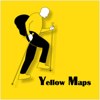We use cookies to make your experience better. To comply with the new e-Privacy directive, we need to ask for your consent to set the cookies. Learn more.
In stock
Availability In Stock
Publisher Yellow Publications
Format Folded Map
Size 27 x 10 cms (folded) / 27 x 109 (unfolded)
Scale 1:16 000 (approx 4 to 1 mile)
ISBN
9780755844906
SKU
83638
Zigzag 16 Dales Way 3: Sedbergh to Bowness-in-Windermere



